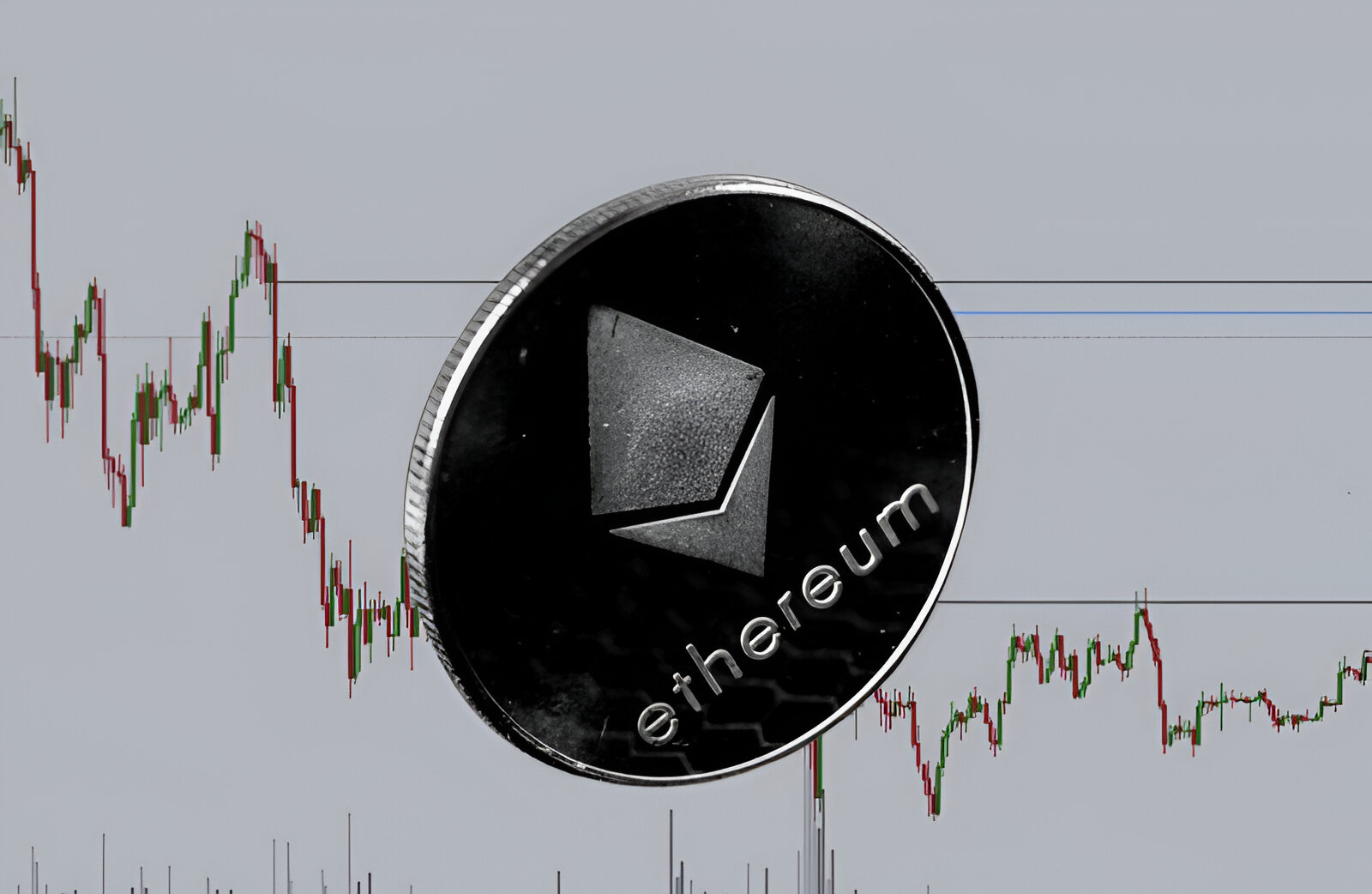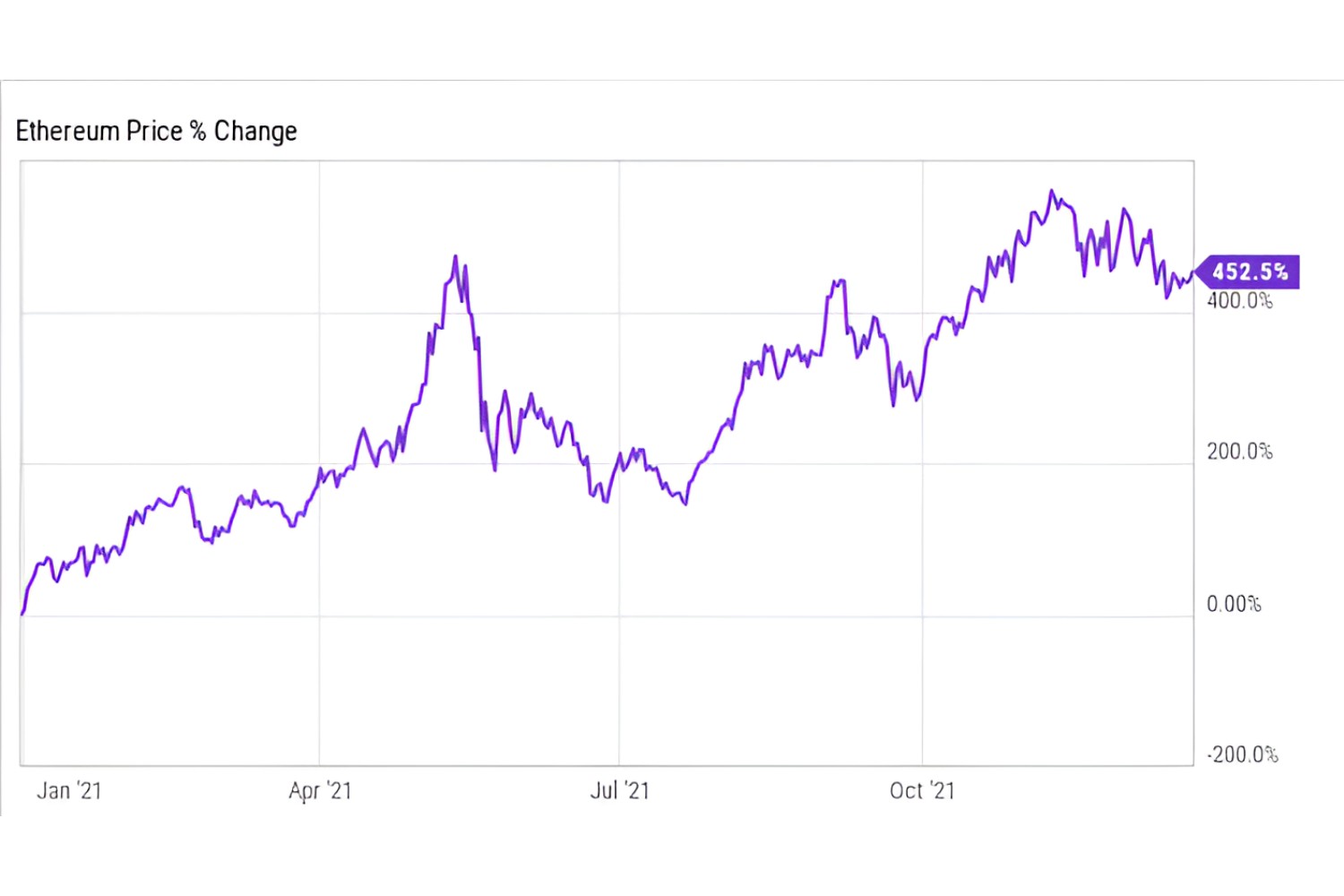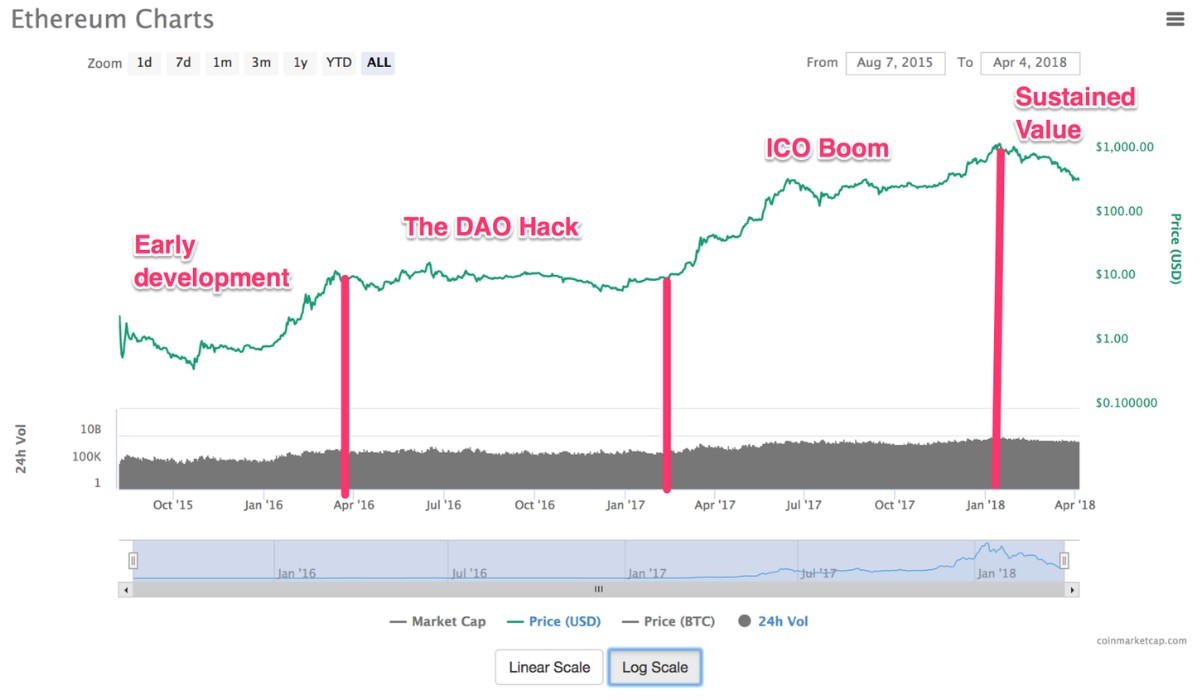Introduction
Welcome to the fascinating world of predicting cryptocurrency prices. Cryptocurrencies have taken the financial world by storm, offering new possibilities for digital transactions and investments. With their volatile nature and potential for significant gains, it’s no wonder that many people are eager to predict and capitalize on the price movements of these digital assets.
However, predicting cryptocurrency prices can be a complex and challenging task. The market is influenced by various factors, including supply and demand dynamics, investor sentiments, regulatory changes, and technological advancements. To make accurate predictions, careful analysis and the right tools are essential.
In this article, we will explore different methods and techniques used to predict cryptocurrency prices. We will delve into various types of market analysis, including technical analysis, fundamental analysis, and sentiment analysis. Additionally, we will discuss popular tools and indicators used by traders and investors to predict price movements.
Furthermore, we will explore the concept of using machine learning algorithms to predict cryptocurrency prices. We will outline the steps involved in collecting and preprocessing data, building and training a predictive model, and evaluating its performance.
It is important to note that predicting cryptocurrency prices is not without its limitations and risks. The volatility of the market, the influence of external factors, and the unpredictable nature of human behavior all contribute to the inherent uncertainty of cryptocurrency price predictions. Therefore, it is crucial to approach these predictions with caution and to use them as a tool for informed decision-making rather than as a guaranteed method for financial success.
By the end of this article, you will have a better understanding of the various approaches and tools available for predicting cryptocurrency prices. Armed with this knowledge, you will be better equipped to navigate the exciting and ever-evolving world of cryptocurrencies.
Understanding Market Analysis
Market analysis is a crucial aspect of predicting cryptocurrency prices. It involves studying and interpreting various data points to understand the current state of the market and make informed predictions about future price movements. There are three main types of market analysis: technical analysis, fundamental analysis, and sentiment analysis.
Technical Analysis: Technical analysis involves analyzing historical price and volume data to identify patterns and trends. Traders use various tools and indicators, such as moving averages, relative strength index (RSI), Bollinger bands, Fibonacci retracement, and candlestick patterns, to evaluate price patterns and predict future movements. Technical analysis assumes that historical price movements can provide insights into future price behavior.
Fundamental Analysis: Fundamental analysis focuses on evaluating the intrinsic value of a cryptocurrency based on factors such as its underlying technology, adoption rate, team reputation, market demand, and regulatory environment. By analyzing these fundamental factors, investors can assess the long-term viability and growth potential of a cryptocurrency, which influences its price. Fundamental analysis is often used by long-term investors looking to identify undervalued cryptocurrencies.
Sentiment Analysis: Sentiment analysis refers to assessing the overall market sentiment and investor emotions related to a particular cryptocurrency. It involves monitoring social media platforms, news articles, forums, and other online sources to gauge the sentiment of market participants. Positive sentiment can drive buying pressure and increase prices, while negative sentiment can lead to selling pressure and price declines. Sentiment analysis can be used alongside other forms of analysis to validate or challenge price predictions.
It is important to note that market analysis is not foolproof and does not guarantee accurate predictions. Cryptocurrency markets are influenced by a multitude of factors, including market manipulation, news events, and external economic factors. Additionally, human emotions and irrational behavior can impact price movements, leading to unpredictability in the market.
By combining different types of market analysis and employing a systematic approach, traders and investors can improve their understanding of the market and make more informed predictions about cryptocurrency prices. It is essential to stay up-to-date with the latest market trends, news, and developments in the cryptocurrency space to make better-informed decisions.
Technical Analysis
Technical analysis is a popular approach used by traders to predict cryptocurrency price movements. It involves studying historical price and volume data to identify patterns, trends, and signals that can help anticipate future price movements. Traders utilize various tools and indicators to analyze charts and make informed trading decisions. Here are some commonly used technical analysis tools:
Moving Averages: Moving averages are widely used to identify trends and support/resistance levels. They calculate the average price over a specific period, such as the 50-day or 200-day moving average. Traders look for crossovers between different moving averages or observe the price’s position relative to the moving average to anticipate trend changes.
Relative Strength Index (RSI): RSI is a momentum oscillator that measures the speed and change of price movements. It oscillates between 0 and 100, with readings above 70 indicating an overbought condition and readings below 30 indicating an oversold condition. Traders use RSI to identify potential trend reversals or confirm the strength of an existing trend.
Bollinger Bands: Bollinger Bands consist of a moving average and two standard deviation lines, creating a volatility channel around the price. Traders observe the width of the bands to gauge market volatility, while price touching or crossing the upper or lower band can signal potential reversals or breakouts.
Fibonacci Retracement: Fibonacci retracement is based on the idea that price often retraces certain proportions of its prior move before continuing in the original direction. Traders use Fibonacci retracement levels, such as 38.2% or 61.8%, to identify potential support or resistance levels where price could reverse or consolidate.
Candlestick Patterns: Candlestick patterns are visual representations of price movements that provide insights into market sentiment. Patterns such as doji, engulfing, hammer, or shooting star can signal potential reversals or continuation patterns. Traders often combine candlestick patterns with other indicators for confirmation.
While technical analysis can be a powerful tool, it is important to note its limitations. Cryptocurrency markets are highly volatile and influenced by various external factors. False signals and market manipulation can occur, leading to potential losses. Therefore, it is crucial to use technical analysis as part of a comprehensive trading strategy and consider other forms of analysis for validation.
Traders often use a combination of technical analysis tools and indicators to increase the probability of successful trades. They analyze price charts, identify patterns and trends, and apply additional filters for entry and exit points. By continuously honing their technical analysis skills and staying up-to-date with market developments, traders can enhance their ability to predict cryptocurrency price movements.
Fundamental Analysis
Fundamental analysis is an approach used by investors to evaluate the value and potential growth of a cryptocurrency based on its underlying fundamentals. It focuses on analyzing factors such as technology, adoption rate, team reputation, market demand, and regulatory environment to assess the intrinsic value of a cryptocurrency. Here are some key aspects of fundamental analysis:
Technology: The technology behind a cryptocurrency plays a crucial role in its potential for growth and adoption. Evaluating the technological aspects, such as the underlying blockchain, consensus mechanism, scalability, security, and smart contract capabilities, can provide insights into the long-term viability of a cryptocurrency.
Adoption Rate: The rate at which a cryptocurrency is being adopted by users and businesses is a significant factor in its future success. Analyzing metrics like the number of active wallets, transaction volume, merchant acceptance, and partnerships can help gauge the level of adoption and potential growth of a cryptocurrency.
Team and Community: The team behind a cryptocurrency and its community play a vital role in its development and success. Assessing the expertise and reputation of the core development team, the community’s engagement and support, and the level of ongoing development activities can provide insights into the potential of a cryptocurrency.
Market Demand: Understanding the market demand for a cryptocurrency is important in evaluating its value. Factors such as the utility of the cryptocurrency, its use case, the potential market size, and competition all impact the demand and ultimately the price of the cryptocurrency.
Regulatory Environment: The regulatory landscape surrounding cryptocurrencies can significantly influence their future prospects. Analyzing the legal and regulatory framework, government attitudes, and potential changes in regulations can help assess the risks and opportunities associated with a cryptocurrency.
Unlike technical analysis, which focuses on price patterns and trends, fundamental analysis tends to have a longer-term perspective. Investors using this approach aim to identify undervalued cryptocurrencies that have the potential for significant growth in the future.
It is important to note that fundamental analysis has its limitations. While it provides insights into the underlying value of a cryptocurrency, external factors such as market sentiment and economic conditions can overshadow the fundamental aspects. Additionally, the cryptocurrency market is highly speculative and subject to volatility, making accurate predictions challenging.
By combining fundamental analysis with other forms of analysis and staying informed about market developments, investors can make more informed decisions and identify cryptocurrencies with strong potential for long-term growth.
Sentiment Analysis
Sentiment analysis is a technique used to gauge the overall sentiment and emotions of market participants towards a particular cryptocurrency. It involves monitoring and analyzing social media platforms, news articles, forums, and other online sources to understand the prevailing sentiment and its potential impact on price movements.
The sentiment of investors and traders can have a significant influence on cryptocurrency prices. Positive sentiment can lead to increased buying pressure, driving prices higher, while negative sentiment can result in selling pressure, causing prices to decline. Here are some key aspects of sentiment analysis:
Social Media Monitoring: Monitoring social media platforms, such as Twitter, Reddit, and Telegram, provides valuable insights into the public sentiment towards a cryptocurrency. Tracking mentions, hashtags, and overall sentiment expressed by users can help understand the level of enthusiasm or skepticism surrounding a particular cryptocurrency.
News Analysis: Analyzing news articles and headlines related to a cryptocurrency can provide insights into the market sentiment. Positive news, such as partnerships, product launches, or regulatory advancements, can generate positive sentiment, while negative news, such as security breaches or regulatory crackdowns, can result in negative sentiment and impact prices.
Forums and Communities: Participating in cryptocurrency forums and communities can allow traders and investors to gauge the sentiment of the community surrounding a particular cryptocurrency. Engaging in discussions, reading comments, and observing the overall mood can help identify prevailing sentiments and potential market trends.
Sentiment analysis is often used alongside other forms of analysis, such as technical and fundamental analysis, to validate or challenge price predictions. If the sentiment aligns with the analysis from these other methods, it can provide additional confidence in the predicted price movements.
However, it is important to note that sentiment analysis has its limitations. The cryptocurrency market is highly speculative and influenced by various external factors. Sentiment can change rapidly and may not always align with price movements or reflect the actual value of a cryptocurrency. Therefore, it is crucial to use sentiment analysis as a tool for information and confirmation, rather than solely relying on it for making investment decisions.
By staying informed about the prevailing sentiment, traders and investors can gain a deeper understanding of market dynamics and potential price movements. Utilizing sentiment analysis alongside other forms of analysis can help paint a more comprehensive picture of market conditions and improve decision-making processes.
Tools and Indicators for Predicting Cryptocurrency Prices
When it comes to predicting cryptocurrency prices, traders and investors have access to a wide range of tools and indicators that can help them make informed decisions. These tools utilize historical price and volume data, as well as mathematical calculations and patterns, to identify potential trends and predict future price movements. Here are some commonly used tools and indicators:
Moving Averages: Moving averages are used to smooth out price data and identify trends. Traders often use different moving averages, like the 50-day or 200-day moving average, to identify potential buying or selling opportunities. Crossovers between different moving averages can signal trend reversals.
Relative Strength Index (RSI): The RSI is a momentum oscillator that measures the speed and change of price movements. It oscillates between 0 and 100, with values above 70 indicating overbought conditions and values below 30 indicating oversold conditions. Traders use the RSI to identify potential trend reversals and validate the strength of a trend.
Bollinger Bands: Bollinger Bands consist of a moving average and two standard deviation lines, providing a visual representation of price volatility. Traders use Bollinger Bands to identify periods of low volatility and anticipate potential breakouts. When the price touches or crosses the upper or lower band, it can indicate overbought or oversold conditions.
Fibonacci Retracement: Fibonacci retracement levels are based on the Fibonacci sequence and ratios. Traders use these levels to identify potential support and resistance levels where price may retrace before continuing its original trend. Common retracement levels include 38.2%, 50%, and 61.8%.
Candlestick Patterns: Candlestick patterns provide visual representations of price movements and can help identify potential trend reversals or continuations. Patterns such as doji, hammer, engulfing, and shooting star can provide valuable insights into market sentiment and potential price movements.
These tools and indicators are just a few examples of the many available to traders and investors. It is important to note that no single tool or indicator can guarantee accurate predictions. Market conditions and dynamics can change rapidly, and external factors can influence price movements. Therefore, it is essential to use a combination of tools and indicators, along with other forms of analysis, to make well-informed predictions and decisions.
Traders and investors should also consider the strengths and limitations of each tool and indicator. Some tools may work better in certain market conditions or for specific cryptocurrencies. It is critical to continually monitor and refine the use of these tools based on market developments and personal trading strategies.
By utilizing these tools and indicators effectively, traders and investors can gain valuable insights into potential price movements and improve their ability to make informed decisions in the dynamic and ever-changing cryptocurrency market.
Moving Averages
Moving averages are widely used tools in technical analysis to identify trends, support and resistance levels, and potential entry and exit points for trades. They are calculated by taking the average price of a cryptocurrency over a specific time period. The most commonly used moving averages are the simple moving average (SMA) and the exponential moving average (EMA).
Simple Moving Average (SMA): The SMA calculates the average price over a set number of periods. For example, a 50-day SMA would average the closing prices of the past 50 days. Traders use SMAs to identify potential trend changes, as the slope and positioning of the moving average can indicate bullish or bearish market conditions.
Exponential Moving Average (EMA): The EMA assigns more weight to recent price data compared to older data points, making it more sensitive to recent price movements. This gives greater importance to the most recent price action and can help identify potential trend changes earlier than the SMA.
Moving averages are often used in combination to generate trading signals. The most common approach is the crossover strategy, which involves two moving averages of different time periods. A bullish signal is generated when the shorter-term moving average crosses above the longer-term moving average, indicating a potential uptrend. Conversely, a bearish signal occurs when the shorter-term moving average crosses below the longer-term moving average, suggesting a potential downtrend.
In addition to identifying trends, moving averages can act as support and resistance levels in the market. The price often bounces off the moving average, indicating a level where buying or selling pressure may increase. Traders watch for these bounces to validate potential entry or exit points.
It is important to note that moving averages are lagging indicators, as they are based on historical data. They smooth out short-term fluctuations and provide a clearer picture of the overall trend. However, they may not be effective in choppy or highly volatile markets, where price can fluctuate rapidly and crossover signals can produce false signals.
Traders should also consider the time frame of the moving average. Shorter-term moving averages, such as the 20-day or 50-day SMA, are used for short-term trading strategies, while longer-term moving averages, such as the 100-day or 200-day SMA, are more suitable for long-term investment analysis. Combining multiple time frames can provide a more comprehensive view of the market.
By using moving averages effectively, traders can identify trends, potential support and resistance levels, and generate trading signals. However, it is important to combine moving averages with other indicators and analysis techniques to validate signals and create a robust trading strategy.
Relative Strength Index (RSI)
The Relative Strength Index (RSI) is a popular momentum oscillator used in technical analysis to measure the speed and change of price movements. It compares the magnitude of recent gains and losses over a specified time period, typically 14 days, and expresses it on a scale of 0 to 100.
The RSI helps traders identify overbought and oversold conditions in the market, which can be potential signs of a trend reversal. Readings above 70 indicate overbought conditions, suggesting that the price may be due for a correction or a downtrend. Readings below 30 indicate oversold conditions, indicating that the price may be due for a bounce or an uptrend. Traders often consider these levels as potential entry or exit points for their trades.
In addition to identifying overbought and oversold conditions, traders also look for divergences between the RSI and the price. Bullish divergences occur when the price forms lower lows while the RSI forms higher lows, indicating underlying strength and potential for an upcoming price reversal. Conversely, bearish divergences occur when the price forms higher highs while the RSI forms lower highs, suggesting weakness and a potential trend reversal.
Moreover, the RSI can be used to validate the strength of a trend. If the RSI is in an uptrend and consistently stays above 50, it suggests that the bullish momentum is strong. Conversely, if the RSI is in a downtrend and consistently stays below 50, it implies that the bearish momentum is robust. Traders can use this information to confirm trend direction and make more informed trading decisions.
While the RSI is a valuable tool, it’s important to consider its limitations. In strongly trending markets, the RSI may remain in the overbought or oversold zone for an extended period. Additionally, during periods of low volatility or consolidations, the RSI may give false signals as price chop creates fluctuating readings. Therefore, it’s crucial to use the RSI in conjunction with other technical indicators and analysis techniques to increase the accuracy of predictions.
Traders should also be aware that the optimal values for overbought and oversold levels may vary depending on the cryptocurrency being analyzed and the prevailing market conditions. It is a good practice to adjust the values based on historical price data and adapt to changing market dynamics.
By effectively using the RSI, traders can identify potential trend reversals, overbought and oversold conditions, and confirm the strength of a trend. However, it’s essential to combine the RSI with other analysis tools and indicators to validate signals and make well-informed trading decisions.
Bollinger Bands
Bollinger Bands are a popular technical analysis tool used by traders to analyze price volatility and identify potential breakouts or reversals in the market. They consist of a central moving average line and two outer bands that represent the standard deviation of price movements.
The central moving average line, typically a simple moving average (SMA), acts as the baseline for the Bollinger Bands. The two outer bands are placed above and below the central line and are calculated based on the standard deviation of the price over a specified period of time.
The width of the Bollinger Bands represents the volatility of the market. In periods of high volatility, the bands widen, indicating large price swings, while in periods of low volatility, the bands contract, indicating smaller price movements. Traders often look for periods of low volatility followed by a breakout, as it may indicate the start of a new trend or a significant price movement.
When the price approaches or touches the upper band, it suggests that the market may be overbought, and there is a potential for a price reversal or consolidation. Conversely, when the price approaches or touches the lower band, it suggests that the market may be oversold, and there is a potential for a price reversal or a bounce. Traders use these levels as potential entry or exit points for their trades.
Bollinger Bands can also be used to identify potential price targets. When the price moves outside the bands, it suggests a significant price move, and traders often use this as a signal to adjust their profit targets or trailing stop levels.
It’s important to note that Bollinger Bands should be used in conjunction with other technical analysis tools and indicators to validate trading signals. They are not foolproof, and false signals can occur, particularly in periods of low volatility or during sideways markets.
Additionally, it’s crucial to consider the prevailing trend and market conditions when using Bollinger Bands. In trending markets, the price may consistently hug one side of the bands, while in range-bound markets, the price may frequently touch both the upper and lower bands.
By effectively utilizing Bollinger Bands, traders can identify periods of volatility, potential overbought or oversold conditions, and price targets. However, it’s important to combine Bollinger Bands with other analysis techniques and indicators to increase the accuracy of predictions and make well-informed trading decisions.
Fibonacci Retracement
Fibonacci retracement is a technical analysis tool that traders use to identify potential levels of support and resistance in the market. It is based on the Fibonacci sequence, a series of numbers in which each number is the sum of the two preceding ones (e.g., 1, 1, 2, 3, 5, 8, 13, and so on).
The most commonly used Fibonacci retracement levels are 38.2%, 50%, and 61.8%. These levels represent the potential retracement of a price movement before it resumes its original trend. Traders draw Fibonacci retracement lines from the lowest low (swing low) to the highest high (swing high) in a particular time period.
When the price retraces and approaches one of the Fibonacci levels, it can indicate a potential area of support or resistance. Traders often look for the price to bounce off these levels or change direction. If the price breaks through a Fibonacci retracement level, it could suggest a deeper retracement or a potential trend reversal.
Another significant level in the Fibonacci retracement tool is the 50% retracement level. This level represents a halfway point between the swing high and the swing low. Many traders consider this level as a critical area of support or resistance.
While Fibonacci retracement can help identify potential levels of interest, it should not be used as the sole basis for making trading decisions. It is important to combine it with other technical indicators and analysis techniques to increase the probability of accurate predictions.
Traders should also be aware that market conditions and trends can influence the effectiveness of Fibonacci retracement. In strong trending markets, retracements may not occur at the expected levels, while in consolidating markets, price may respect Fibonacci levels more consistently.
Moreover, it is crucial to use Fibonacci retracement in conjunction with other confirmatory indicators or price patterns. Traders often look for confluence, where multiple levels align with other technical indicators, to strengthen the validity of their analysis.
By utilizing Fibonacci retracement effectively, traders can identify potential areas of support and resistance, plan entry and exit points, and manage risk. However, it is important to exercise caution and combine this tool with other forms of analysis to make well-informed trading decisions.
Candlestick Patterns
Candlestick patterns are visual representations of price movements that help traders analyze market sentiment and predict potential price reversals or continuations. They are formed by the open, high, low, and close prices of an asset during a given time period.
Candlestick charts display each price period as a “candle,” which consists of a body and sometimes upper and lower “wicks” or “shadows.” The body represents the price range between the open and close, while the wicks indicate the price range between the high and low.
There are a variety of candlestick patterns, each with its own unique interpretation and significance. Here are some commonly recognized candlestick patterns:
Doji: A doji candle has a small body, indicating that the open and close prices are nearly identical or exactly the same. It suggests indecision in the market and can be a potential sign of a reversal.
Engulfing Pattern: An engulfing pattern occurs when a larger candle completely engulfs the previous candle. A bullish engulfing pattern forms when a small bearish candle is followed by a larger bullish candle, indicating a potential bullish reversal. Conversely, a bearish engulfing pattern forms when a small bullish candle is followed by a larger bearish candle, suggesting a potential bearish reversal.
Hammer and Hanging Man: These patterns have a small body and a long lower wick, resembling a hammer or hanging man. A hammer forms at the bottom of a downtrend, indicating a potential bullish reversal, while a hanging man forms at the top of an uptrend, suggesting a potential bearish reversal.
Shooting Star and Inverted Hammer: These patterns have a small body and a long upper wick. A shooting star forms at the top of an uptrend, indicating a potential bearish reversal, while an inverted hammer forms at the bottom of a downtrend, suggesting a potential bullish reversal.
These are just a few examples of candlestick patterns. Traders often combine multiple candlestick patterns and assess their context within the broader market conditions to make more robust predictions.
It is important to note that candlestick patterns should not be used in isolation. Traders should consider other forms of technical analysis, such as trendlines, support and resistance levels, and volume indicators, to validate the signals generated by candlestick patterns.
Additionally, it is crucial to keep in mind that candlestick patterns are probabilistic and not guaranteed predictors of future price movements. Traders should manage their risk and use appropriate risk management strategies when executing trades based on candlestick patterns.
By learning and applying candlestick patterns effectively, traders can gain insights into market sentiment, spot potential reversals or continuations, and enhance the accuracy of their trading decisions.
Predicting Cryptocurrency Prices Using Machine Learning
Machine learning has emerged as a powerful tool for predicting cryptocurrency prices, leveraging algorithms and statistical models to analyze vast amounts of historical data and identify patterns or trends. By utilizing machine learning techniques, traders and investors aim to make more accurate and data-driven predictions to enhance their decision-making process. Here’s an overview of the steps involved in predicting cryptocurrency prices using machine learning:
Collecting Data: The first step in machine learning-based price prediction is gathering relevant data. This includes historical price data, trading volumes, market sentiment indicators, news sentiment, and any other variables that may influence cryptocurrency prices. Depending on the desired prediction time frame, the data can be collected at different intervals, such as hourly, daily, or monthly.
Data Preprocessing: Once the data is collected, it needs to be preprocessed before feeding it into machine learning algorithms. This involves cleaning the data, handling missing values, normalizing or scaling the data, and removing any outliers. Properly preprocessing the data ensures its quality and improves the accuracy of the prediction models.
Building and Training a Model: After preprocessing the data, a machine learning model is built and trained using the collected and preprocessed data. Various machine learning algorithms, such as linear regression, decision trees, random forests, support vector machines, or neural networks, can be employed depending on the specific requirements and characteristics of the data.
Evaluating and Fine-tuning the Model: Once the model is trained, it needs to be evaluated to assess its performance and accuracy. This is done by using a separate set of data, often referred to as a validation set or test set. Various evaluation metrics, such as mean absolute error (MAE), mean squared error (MSE), or root mean squared error (RMSE), are used to measure the model’s performance. If necessary, the model can be fine-tuned by adjusting parameters or trying different algorithms to improve its accuracy.
It’s important to note that machine learning models are not perfect and cannot predict cryptocurrency prices with certainty. Cryptocurrency markets are influenced by various factors, and unexpected events can cause significant price fluctuations. Additionally, past performance is not always indicative of future trends, making accurate price predictions challenging.
Despite the limitations, machine learning-based price prediction models can provide valuable insights and help traders and investors make more informed decisions. They can aid in identifying potential trends, support risk management strategies, and generate trading signals based on data-driven analysis.
As the field of machine learning continues to advance, there are ongoing efforts to develop more sophisticated models that consider a wide range of factors and incorporate real-time data. However, it is important to use machine learning-based predictions as a tool alongside other forms of analysis and to exercise caution when implementing them in the volatile cryptocurrency market.
Collecting Data
Collecting relevant and high-quality data is a crucial step in predicting cryptocurrency prices using machine learning. This data provides the foundation for training and building accurate prediction models. Here are some key considerations for collecting data:
Historical Price Data: Historical price data is the primary source of information for predicting cryptocurrency prices. It includes the opening price, closing price, high price, low price, and trading volume for specific time intervals. Traders collect historical price data from reliable sources or cryptocurrency exchanges, considering the desired prediction timeframe.
Trading Volume: Trading volume refers to the number of shares or contracts traded in a specific cryptocurrency within a given time period. It indicates the liquidity and interest in a cryptocurrency, and high trading volume often accompanies significant price movements. Collecting trading volume data allows the model to factor in the market activity and its potential impact on price changes.
Market Sentiment Indicators: Market sentiment indicators aggregate and analyze data from various sources to gauge the overall sentiment and mood of investors in the cryptocurrency market. These indicators include sentiment analysis of social media posts, news articles, and other online platforms. By collecting and incorporating market sentiment data, the model can factor in the collective emotions and opinions of market participants.
News Sentiment: News sentiment data provides insights into how news articles and headlines are influencing the market sentiment and potentially impacting cryptocurrency prices. It involves monitoring news sources and using natural language processing techniques to analyze the sentiment expressed in the articles regarding specific cryptocurrencies or the broader market.
Additional Variables: Depending on the specific prediction model and research objectives, other variables can be considered, such as market indicators (e.g., moving averages, oscillators), blockchain data (e.g., transaction volume, network activity), macroeconomic factors, or regulatory developments. Adding relevant variables enhances the prediction model’s accuracy and can provide a more comprehensive view of the cryptocurrency market.
It is important to ensure the data collected is reliable, accurate, and free from biases. Traders and researchers should use reputable sources, verify the data quality, and address any missing or erroneous data points. Additionally, maintaining a robust data collection process allows for regular updates and ensures the model takes into account the most recent information.
As the cryptocurrency market evolves rapidly, staying well-informed about new data collection techniques and emerging data sources is essential. Traders and researchers should continuously explore innovative data collection methods and adapt their strategies to harness new data insights for improved prediction accuracy.
Data Preprocessing
Data preprocessing is a critical step in predicting cryptocurrency prices using machine learning. It involves transforming and preparing the collected data to ensure its quality, consistency, and suitability for training and building prediction models. Here are key considerations in the data preprocessing stage:
Data Cleaning: Data cleaning involves identifying and handling missing or erroneous data points. Missing data can be imputed through various techniques, such as replacing missing values with the mean, median, or mode of the dataset or using more advanced imputation methods like regression or k-nearest neighbors. Erroneous data points should be corrected or removed to avoid potential inaccuracies in the prediction models.
Data Normalization/Scaling: Normalizing or scaling the data is essential to ensure all variables have a similar range or distribution. This is important because certain machine learning algorithms, such as neural networks, perform better with normalized data. Common normalization techniques include min-max scaling, z-score scaling, or logarithmic scaling, depending on the requirements of the data and the machine learning algorithm.
Handling Categorical Variables: If the dataset contains categorical variables, they need to be encoded numerically for the machine learning models to process them effectively. One-hot encoding, label encoding, or target encoding are common techniques used for handling categorical variables, depending on the nature of the data and the machine learning algorithm being employed.
Feature Selection/Dimensionality Reduction: Sometimes, the dataset may contain a large number of features or variables, which can lead to overfitting and increased computational complexity. Feature selection or dimensionality reduction techniques, such as correlation analysis, principal component analysis (PCA), or feature importance ranking, can be applied to retain the most relevant features and improve the model’s performance.
Dealing with Outliers: Outliers, or extreme values, can distort the data and negatively impact the prediction models. Robust statistical methods or domain knowledge can be used to identify and handle outliers effectively. Options for handling outliers include removing them, replacing them with a more appropriate value, or transforming the data to reduce their impact.
Data Partitioning: To evaluate the performance of prediction models, the dataset is often divided into training, validation, and testing subsets. The training set is used to train the model, the validation set is used to fine-tune the model and optimize parameters, and the testing set is used to evaluate the final model’s performance. Proper partitioning ensures unbiased evaluation and prevents overfitting.
By properly preprocessing the data, traders and researchers can ensure the quality and accuracy of the dataset used to train the prediction models. This improves the reliability of the models and enhances their ability to predict cryptocurrency prices effectively.
However, it is important to assess the impact of the preprocessing techniques on the original data and consider the specific requirements of the prediction algorithms being employed. Flexibility and experimentation are necessary to find the most suitable preprocessing methods that optimize the performance of the prediction models.
Building and Training a Model
Building and training a model is a crucial step in predicting cryptocurrency prices using machine learning. This stage involves selecting an appropriate algorithm, defining the model architecture, and training it with the preprocessed data. Here are the key steps involved in building and training a model:
Selecting an Algorithm: The first step is to choose an appropriate machine learning algorithm for the prediction task. Various algorithms can be used, such as linear regression, decision trees, random forests, support vector machines (SVM), or neural networks. The selection depends on the nature of the data, the complexity of the problem, and the desired level of prediction accuracy.
Defining the Model Architecture: Once the algorithm is chosen, the model architecture needs to be defined. For example, in the case of neural networks, the number of layers, the number of neurons per layer, and the activation functions need to be specified. The architecture should strike a balance between complexity and simplicity to avoid overfitting or underfitting the data.
Splitting Data into Training and Validation Sets: The preprocessed data is typically split into training and validation sets. The training set is used to teach the model the underlying patterns and relationships within the data, while the validation set is used to assess the model’s performance and tune its parameters. Proper data splitting ensures unbiased evaluation and helps prevent overfitting.
Training the Model: During the training phase, the model goes through an iterative process of adjusting its internal parameters to minimize the error between the predicted outputs and the actual values in the training data. This is accomplished by feeding the training data through the model and updating the model’s parameters based on the calculated error. The training process continues for a specified number of epochs or until a convergence criterion is met.
Evaluating the Model: Once the model is trained, it is evaluated using the validation set to assess its performance and fine-tune its parameters. Various evaluation metrics, such as mean absolute error (MAE), mean squared error (MSE), or root mean squared error (RMSE), can be used to measure the accuracy of the model’s predictions. Adjustments can be made to the model’s architecture or hyperparameters to improve its performance.
Testing the Model: After validating and fine-tuning the model, it is evaluated on a separate testing set to assess its generalization and performance on unseen data. This provides an estimate of how well the model can predict cryptocurrency prices in real-world scenarios.
Throughout the process, it is important to monitor the model’s performance, assess its strengths and limitations, and adjust the model or experiment with different algorithms as necessary. Machine learning models are not infallible, and continuous improvement and adaptation are essential for enhanced prediction accuracy.
Additionally, it is crucial to be mindful of overfitting, where the model performs well on the training data but fails to generalize to new data. Regularization techniques, such as dropout or L1 and L2 regularization, can be used to mitigate overfitting and improve the model’s ability to predict unseen data.
By effectively building and training a model, traders and researchers can develop powerful tools for predicting cryptocurrency prices. However, continuous monitoring, evaluation, and adaptation are necessary to ensure the model’s accuracy and keep pace with the dynamic nature of the cryptocurrency market.
Evaluating and Fine-tuning the Model
Evaluating and fine-tuning the model is an important step in the process of predicting cryptocurrency prices using machine learning. This stage involves assessing the performance of the trained model, identifying areas for improvement, and optimizing the model’s parameters. Here are the key steps in evaluating and fine-tuning the model:
Evaluation Metrics: Evaluation metrics are used to measure the performance of the model and determine how well it predicts cryptocurrency prices. Common metrics include mean absolute error (MAE), mean squared error (MSE), root mean squared error (RMSE), or accuracy scores. Evaluating model performance using appropriate metrics provides insights into its strengths and weaknesses.
Cross-Validation: Cross-validation is a technique that helps assess the model’s performance across multiple subsets of the data. It involves dividing the data into several folds or partitions and training the model on one subset while evaluating it on the remaining subsets. Cross-validation helps ensure the model’s generalization capability and reduces the risk of overfitting the data.
Hyperparameter Tuning: Fine-tuning the model involves adjusting its hyperparameters – the tunable settings that determine the model’s behavior. Examples of hyperparameters include the learning rate, regularization strength, number of neurons or layers (in neural networks), or the number of trees in a random forest algorithm. Grid search or random search techniques can be employed to systematically explore different combinations of hyperparameters and identify the optimal configuration.
Regularization Techniques: Regularization techniques are used to address overfitting in machine learning models. Overfitting occurs when the model becomes too complex and learns too closely from the training data, resulting in decreased performance on unseen data. Techniques like dropout, L1, and L2 regularization can be applied to penalize complexity and improve the model’s ability to generalize.
Ensemble Methods: Ensemble methods combine multiple models to improve predictions through a voting or averaging mechanism. Techniques such as bagging, boosting, or stacking can be used to build ensembles of models. Ensemble methods can help reduce bias, variance, and enhance the overall predictive accuracy of the system.
Validation and Testing: The model’s performance should be validated and tested on separate datasets that were not used during the training or fine-tuning process. Validation data helps monitor the model’s performance as it goes through iterations, while testing data provides an assessment of its performance on unseen data. This ensures that the model has the ability to make accurate predictions in real-world scenarios.
Continual evaluation and fine-tuning of the model are necessary as market dynamics change and new data becomes available. The model may need to be calibrated periodically to adapt to evolving cryptocurrency market trends and react to shifts in market behavior.
It’s important to note that while evaluating and fine-tuning the model can enhance its performance, it does not guarantee 100% accuracy in predicting cryptocurrency prices. The cryptocurrency market is influenced by numerous factors, including external events and investor sentiment, which can introduce unpredictability. Therefore, it’s crucial to use the model’s predictions as one of several decision-making tools in cryptocurrency trading, alongside other forms of analysis and human judgment.
Limitations and Risks of Predicting Cryptocurrency Prices
While predicting cryptocurrency prices using various techniques, including technical analysis and machine learning, can offer valuable insights, it’s important to recognize the limitations and risks involved in such predictions. Understanding these limitations is essential for informed decision-making in the cryptocurrency market. Here are some key limitations and risks to consider:
Market Volatility: Cryptocurrency markets are known for their high volatility. Prices can experience rapid and significant fluctuations, making accurate predictions challenging. Unexpected events, regulatory changes, or market sentiment shifts can lead to unpredictable price movements, rendering predictions less reliable.
Uncertain External Factors: Cryptocurrency prices can be influenced by numerous external factors, including geopolitical events, economic factors, regulatory announcements, or market manipulation. These factors are challenging to predict accurately, adding uncertainty to price forecasts.
Data Limitations: The accuracy of predictions heavily relies on the quality and completeness of the data used. However, cryptocurrency markets often lack transparency, and data can be limited or unreliable. Incomplete or biased data can affect the performance of prediction models and lead to inaccurate forecasts.
Model Assumptions: Prediction models, whether based on technical analysis or machine learning, rely on certain assumptions. These assumptions may not always hold true or may not capture all the complexities of the market. It’s important to be cautious and validate the assumptions underlying the models to avoid erroneous predictions.
Overfitting and Data Mining Bias: Machine learning models can be prone to overfitting, where they memorize the training data rather than learn meaningful patterns. Overfitting can lead to poor performance on unseen data and inaccurate predictions. Additionally, data mining bias can occur when models are fine-tuned based on past data, leading to over-optimistic results that may not generalize well to future data.
Lack of Historical Precedence: Cryptocurrencies are relatively new assets, and historical data is limited compared to traditional financial markets. The lack of extensive historical data makes it challenging to build accurate predictive models, as cryptocurrencies have not undergone all types of market conditions and economic cycles.
Psychological Factors: Investor psychology and market sentiment play significant roles in cryptocurrency price movements. Greed, fear, and herd mentality can drive prices in unpredictable ways. Emotional decision-making and irrational behavior can override any technical or fundamental analysis, making predictions less reliable.
It’s crucial to approach cryptocurrency price predictions with caution, using them as one of several tools in the decision-making process. Diversification, risk management strategies, and a long-term investment perspective are recommended to mitigate the risks associated with predicting cryptocurrency prices.
Furthermore, understanding the limitations of predictions can help traders and investors make more informed decisions and reduce their exposure to unnecessary risks. Maintaining a skeptical mindset, regularly reassessing models and assumptions, and staying updated on market trends and news can help navigate the dynamic and volatile cryptocurrency market more effectively.
Conclusion
The world of predicting cryptocurrency prices is both exciting and challenging. Various techniques, such as technical analysis and machine learning, offer valuable insights into potential price movements. However, it is important to recognize the limitations and risks associated with these predictions.
Technical analysis provides tools like moving averages, RSI, Bollinger Bands, Fibonacci retracement, and candlestick patterns to identify trends and potential entry or exit points. Fundamental analysis examines the underlying value and adoption potential of cryptocurrencies. Sentiment analysis gauges market sentiment and emotions of market participants. All of these forms of analysis require continuous learning, adaptation, and a critical assessment of their findings.
Machine learning, on the other hand, leverages algorithms and data to make predictions based on patterns and historical trends. While machine learning can enhance prediction accuracy, it is not immune to limitations like overfitting, data biases, and the risks associated with uncertain market conditions.
Ultimately, predicting cryptocurrency prices is not a guaranteed endeavor. The cryptocurrency market is highly volatile, influenced by numerous external factors, and subject to human emotions and market sentiment. Accurate predictions require a comprehensive understanding of the market, continuous research, and a blend of different analysis techniques.
To navigate the cryptocurrency market effectively, it is crucial to balance predictions with risk management strategies, diversification, and a long-term perspective. Traders and investors should use predictions as one of several decision-making tools, alongside fundamental analysis, technical indicators, market sentiment, and their own judgment.
As the cryptocurrency market evolves, new challenges and opportunities will emerge. Staying informed about market trends, regulatory developments, and technological advancements is essential for adapting predictive strategies. Continual learning, staying updated with the latest research, and considering inputs from multiple sources can help traders and investors thrive in this dynamic market.
In summary, predicting cryptocurrency prices is a complex and multifaceted task. While tools, techniques, and machine learning models can provide valuable insights, they should be seen as aids rather than infallible predictors. By understanding the limitations, managing risks effectively, and adopting a well-informed and disciplined approach, traders and investors can navigate the cryptocurrency market with greater confidence.

























